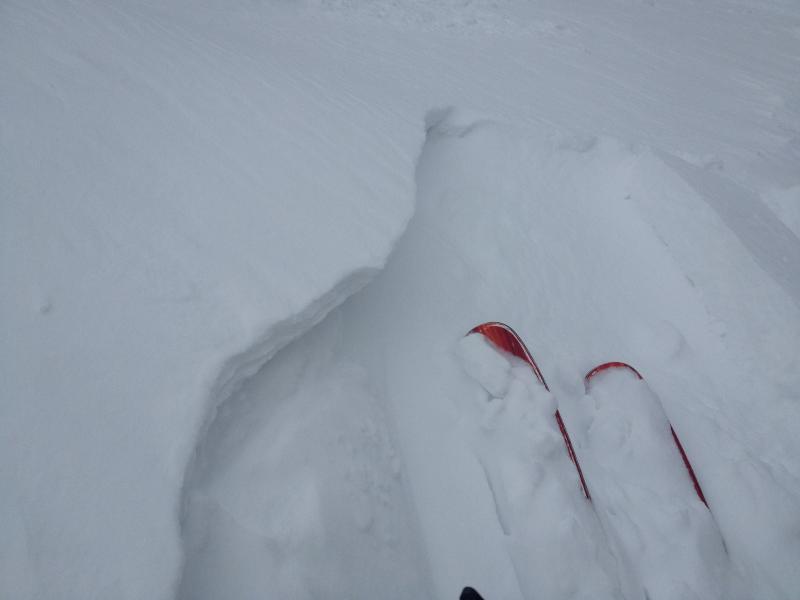Seems that most of our avalanche problems revolve around wind and sun these days. To be sure, a few outliers from the past couple of days may have been into older faceted snow (Alexander Basin, Python Chutes). But these are the exception and not the rule. Here are a few photos and thoughts from a short walkabout today - Note the creased drifting of the slab as well documented by Bruce yesterday.
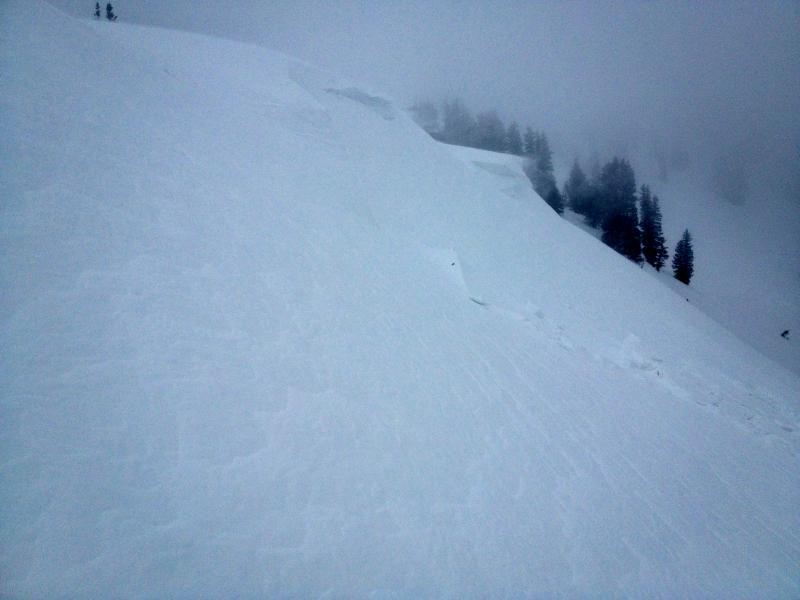
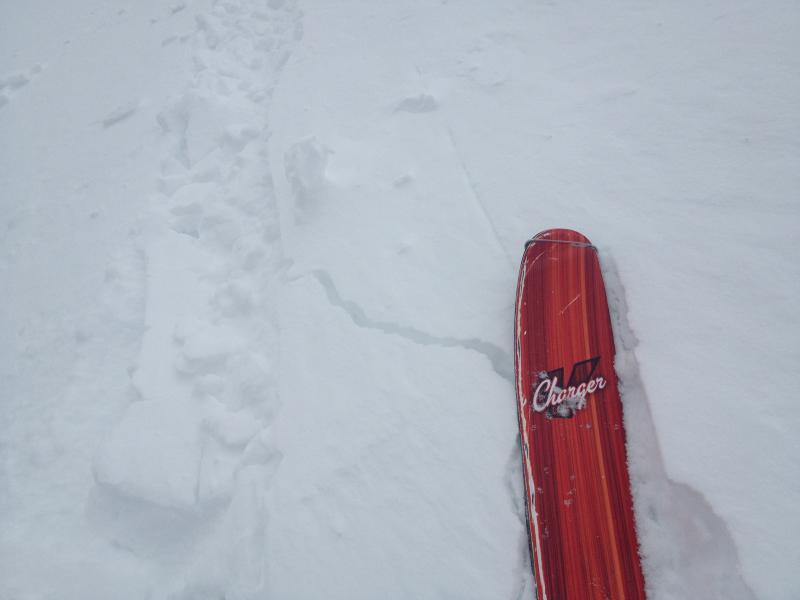
Note in the pics below the wind blowing from left to right. The steep "slip face" of the etching faces the wind. Similarly, the wind eroding the exposed face...only to blow it into the basin or eddy behind the krummholz. (great german expression for old, twisted man or tree found in the alpine).
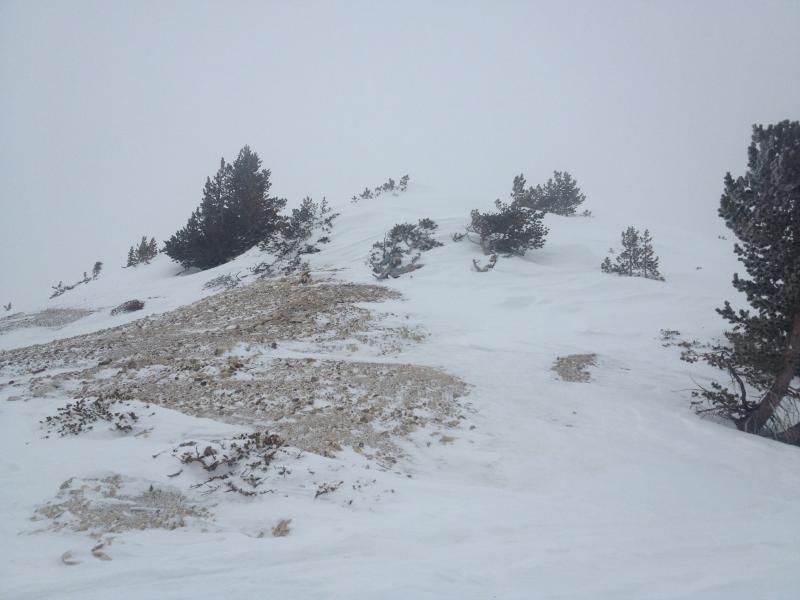
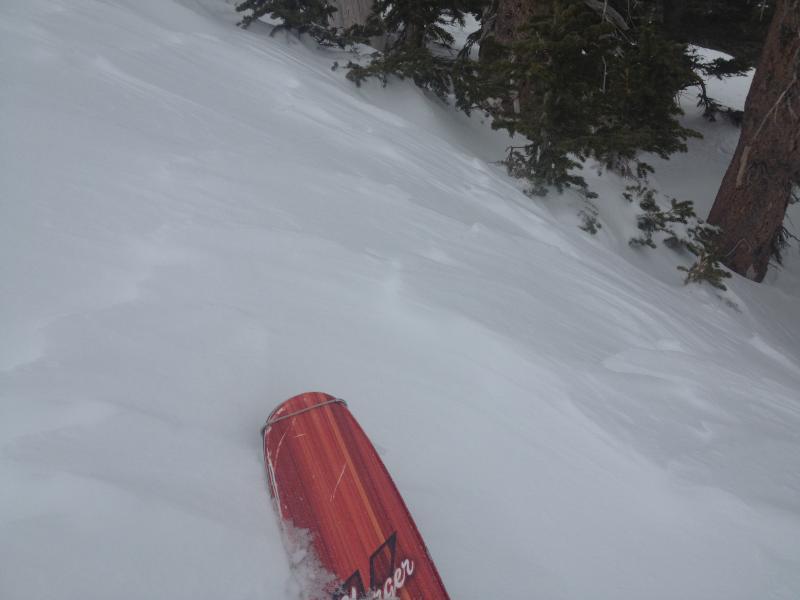
Snow grains below. The winds easily tear apart the limbs of the stellar, dendritic snow crystals (dendro-referring to tree - as in branches of same) and pack the smaller grains together to form a dense wind slab or wind drift. 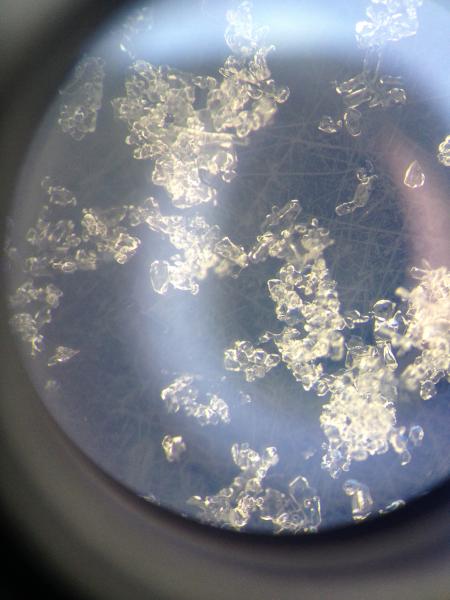
Note how small and rounded the wind damaged grains are - they can pack much more easily together. Slabs can appear "white" compared to the more porous/less dense "gray" weak layers...Photos below of the weak layers in some of yesterday's wind slab avalanches....Note how cool the different snow "flakes" are - columns, stellar branches, plates, even a crystal with an inexplicable bullet hole shot through it. It's all about structure - more cohesive over less cohesive...with the more dense wind slab overloading the house of cards - in this case the lower density new snow crystals. With enough loading and a low density enough new snow crystal, remote triggering is possible even within the storm snow...not exclusive to surface hoar or faceted snow as often presumed.
Ned Bair got his PhD in California looking at mechanical properties of avalanche failure in new snow avalanches. His most recent paper is here. It's worth a look-see.




